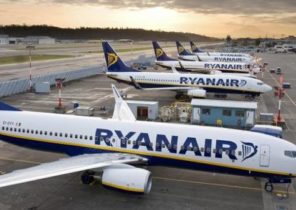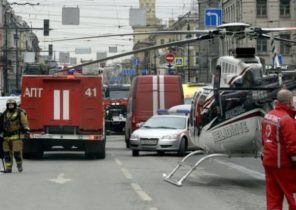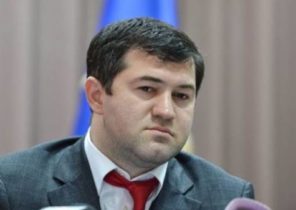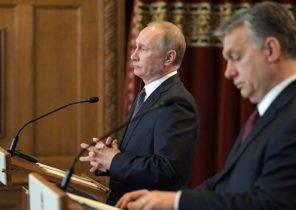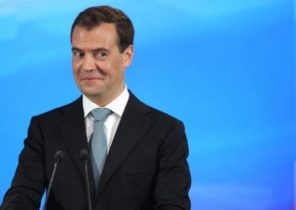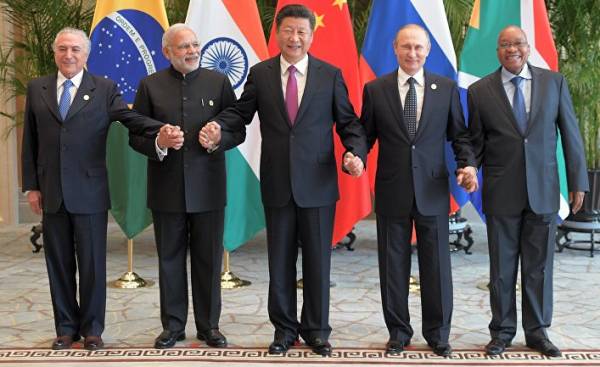
13 Feb 2016 first page of leading Russian and Latin American Newspapers was very similar. They published photos of Pope Francis and the Russian Patriarch Kirill during their meeting in the Cuban capital Havana. It was the first in history meeting of the head of the Roman Catholic and Russian Orthodox churches. The meeting place was not chosen by chance. Russia thinks Latin America is convenient for Moscow to resolve a number of issues on its domestic and foreign policy agenda. In particular, this historic meeting and the environment became the perfect picture for Russian TV. It advertised the success of Russia in restoring its global influence and at the same time showed the futility of attempts to isolate it in the international arena. For Vladimir Putin this alone the picture has become much more important than the arguments of all those who criticized the rapprochement with Rome, calling it a dangerous concession to the Vatican.
But the meeting with the Pope was for Kirill only the beginning of his lengthy tour of North and South America, during which he met with already familiar regional leaders. The visit of the Patriarch has become almost a duty for nearly all Latin American leaders when they visit Moscow. Such visits are a symbolic recognition of the important role the Orthodox Church plays in the formation and consolidation of a new Russian identity. Here the interests of the Russian state and the Church coincide, and this partly explains the growing influence of the Russian Orthodox Church in Latin America.
This time the task of Russia is not to support any of the regional Communist leader or movement, as it was in the Soviet era. Today, Russia, in cooperation with the Orthodox Church supports “universal traditional values” globally, and this activity finds response in many conservative strata of Latin American society. From this point of view, the meeting in Havana was another proof that Russia is returning to the region for purposes which are not limited to the periodic supply of weapons and contacts with anti-American States. Today Russia is seeking to establish its long-term and multifaceted presence in the Western hemisphere.
The Russians are returning
In the era of the cold war, the Cuban revolution has allowed Moscow to establish the first real base in the Western hemisphere. For many years, Havana was directly received from Councils assistance. During the cold war, the Soviet Union supported by other left-wing regimes in the region. But by the end of 1980-ies, when Soviet economic power began to weaken, the influence and Moscow’s activity in Latin America has dramatically waned, and it allowed experts to conclude that “Russians do not go.”
The new Russian state inherited from the Soviet Union such relations with Latin American countries that were built on the basis of common ideology. Russia soon realized that to restore these ties to the Soviet level of needed protection and support that the Kremlin no longer afford, and not particularly necessary. Thus, a large part of the 1990-ies Russia was absent in Latin America. Taking into account the economic problems of the country and its initial willingness to cooperate with the West, the Yeltsin government decided to give priority to that distant region.
The situation began to change in the late 1990’s, when Russian leaders, including foreign Minister Yevgeny Primakov, frequent in some countries of Latin America. Russia wanted to build new relationships and repair old ones, especially with those political figures who have had problems with the United States, for example, Colombian President Ernesto Samper (Ernesto Samper). Russia has become one of the few countries that openly supported Samper, despite accusations that he received funds for his campaign from the drug cartel. Bogotá became the answer to buy from Russia military helicopters, abandoning the technology of American production, which was supposed to go to Colombia in accordance with the terms and conditions have been signed and approved by the Congress of the agreement.
In addition to the diplomatic efforts of Russia in the late 1990s, many Russian companies, especially from the energy sector and the military-industrial complex, rushed to Latin America in search of new markets and opportunities. The volume of Russian trade with this region has really grown, especially with Argentina, Brazil and Mexico. However, this trade was far from the volumes of Russia’s trade with major partners from Europe and Asia. Moreover, many Russian companies hoping for contracts in Latin America, was not able to compete with other market participants. As a result, the part of them soon left the region.
Why Russia is important for Latin America
Serious improvement of relations between Russia and the countries of Latin America in recent years was the result of a political turn to the left at the beginning of 2000-ies. But unlike the Soviet period, not the overall ideological orientation brought together Russia with Lula in Brazil, Kirchner in Argentina and the countries of the Bolivarian Alliance for the peoples of our America (ALBA). Convergence has happened due to the fact that it promised some tangible political and economic benefits Russia and its Latin American partners.
Brazil, like Russia, appreciates its membership in the BRICS Association (comprising of Brazil, Russia, India, China and South Africa), seeing in it a recognition of his status as a global player. In the case of Argentina, Russia provided political support at a very important time when the country faced internal and external difficulties. Russia’s relations with key members of the Bolivarian Alliance (Venezuela, Cuba and Nicaragua) will benefit greatly from the fact that between them was not uncomfortable political problems. Latin America knew that Russia will not ask questions about human rights violations in Cuba, the persecution of the opposition in Venezuela, the abuse of power in Nicaragua. At the same time, Russia realized that Caracas, Havana and Managua is in any case not going to criticize her for her domestic policies.
At the end of the first decade of the 21st century in Russia has increased anti-American sentiment, and the Kremlin became an advocate for a new multi-polar world order, which found a positive response from such leaders as Hugo Chavez, Raul Castro and Daniel Ortega. The new Latin American elite also welcomed the change in the Kremlin’s attitude to the Soviet political heritage and commended the glorification of the Soviet past in modern Russia, as many of its members participated in the guerrilla movements and insurrections during the cold war, and felt close to the Soviet Union. According to these people, the Russians arrived, and the Russian, what they knew. And last one, but not by value. The leaders of the Bolivarian Alliance believe that even if the rapprochement with Russia will not be able to return “good old days” with their generous Soviet aid, Moscow thanks to the oil riches in certain circumstances, may become an attractive source of financial assistance. This strategy partly worked: greeting arriving them with visits by Russian bombers and warships, to recognize Abkhazia and South Ossetia, offering its territory for the deployment of Russian military bases and supporting the position of Russia in the UN, Nicaragua, Venezuela and Cuba received aid and loans (and Havana have written off the old debts of the Soviet era).
However, the military cooperation of Russia with the countries of the Western hemisphere is very limited, and Moscow does not seek to increase its military presence in the region. Russia is such a presence can not afford, and the Kremlin does not want to assume long-term financial obligations in Latin America. Visits of ships and strategic bombers in Central and South America it’s actually scenes from a political show called “Make Russia great again”, the audience which is the General public in Russia. It is also very important reason of the interest which Russia has in Latin America.
Why Latin America is important for Russia
For Russia the main value of Latin American and Caribbean countries is their geographic proximity to the United States. According to the Kremlin’s “near abroad” of Washington. Moscow believes that its own near abroad, which it considers the territory of the former Soviet Union, this is the region where all other States have to reckon with its interests. In addition, the Russian government believes that the United States has persistently ignored the interests of Russia, and for this reason, it must increase its presence in Latin America. Back in 1997, who was then Deputy Prime Minister Boris Nemtsov during the visit to Latin America said that if Russia will retain its presence in the region, it will be easier to do business with the West on the neighbouring territories. In subsequent years, this view has only strengthened. In 2013, Moscow stated that its relations with Latin America “strategically important”.
During the crisis in Georgia in 2008 and Ukraine in 2014, Russia showed the uncertainty that was associated with the presence of us Navy in the Black sea and with the support that Washington has provided Tbilisi and Kiev. From this point of view, a bright but brief flash of military hysteria in South and Central America can be explained by the logic of reciprocity. For the first time, Moscow sent their planes and ships to the Western hemisphere shortly after the Russian-Georgian war of 2008, and signs of increasing military cooperation with Nicaragua coincided with the aggravation of the situation in Ukraine and the annexation of Crimea.
But the concept of reciprocity and retaliation in “American near abroad” goes far beyond the military sphere. Latin America holds a special place in the political play, which is on Russian TV. The exceptional popularity of Vladimir Putin in Russia is partly due to the widespread perception that he has restored Russia as a world power rights, and the United States again became the most important opponent of Moscow. The activity of Russia in Latin America provides a leading Russian media a good opportunity to introduce it as a growing world power that is able to increase its presence even in the rear the United States.
Leading Russian TV channels and popular print publications widely reported regular visits of the Russian President and other senior leaders. This lighting is especially widened after 2008, when Russian and Latin American political figures of the countries of the Bolivarian Alliance of Argentina and Brazil started to talk about the important role will Russia play in creating a new and “fair” world political order contrary to the aspirations of Washington and us allies. In the context of the ongoing Ukrainian crisis and Russian intervention in Syria state media Russia is often misleading about how Latin American leaders support Moscow’s position.
They inform about the other activities, say, on a joint celebration of the 70th anniversary of the end of the Second world war (an important delegation from Moscow took part in the festivities in Cuba), about the discovery of the legendary monuments of local leaders (say, the memorial Museum of Chavez in Venezuela), the official launch of Putin and Cristina Fernandez Hispanic broadcasting Russia Today on the national public channel in Argentina. During visits to Moscow, the Latin American heads of state visit the memorials of the great Patriotic war or pay tribute to Russian national traditions (for example, Hugo Chavez awarded the title of honorary Cossack).
As a result of the efforts of the Russian media, the General public of the country is much better informed about Latin America and its importance for Russia than in the recent past. When sociologists asked the Russian respondents to identify friendly to Russia country, in 2006 they did not name any one Latin American nation; by 2008, some countries started to appear in this category; and in 2016, Cuba, Venezuela and Brazil entered the top ten of countries friendly to Russia.
Latin America: doors wide open
After a quarter-century after the collapse of the Soviet Union, Latin America was the only extensive and important geographic, economic and political region in the “far abroad” of Russia, which the Kremlin provides good opportunities for the implementation of various tasks of the foreign policy agenda today at a reasonable cost. Base is ready for this: in Russia today, sustainable relations with all countries of the Western hemisphere, and none of them supports calls in the U.S. and Europe to isolate Moscow on the international arena in response to Putin’s actions against Ukraine. In addition, Russia has observer status in the Organization of American States, has a working relationship with a number of other regional blocs and organizations and Russian citizens visa free travel to almost all the countries of Latin America and the Caribbean (the latter becoming a popular place for the Russian rich and middle class). There are certain opportunities in business, especially in the field of arms trade, which has always been one of the main priorities for the Russian state. The Russian Diaspora in Latin America are not so numerous as in other parts of the world, but Moscow is interested in using the opportunities that living in this region the Russians. It also aims to build relationships with thousands of Latin American graduates of Soviet and Russian universities, since many of them occupy an important position in the ranks of the local elite.
Finally, the most ambitious project of the Kremlin is the promotion of broadcasting RT in Spanish, and Internet expansion in the region. In RT programs in Latin America often include topics and issues of special interest to local viewers, and the audience of this channel is growing faster than any other foreign media. RT also has a serious impact on the Internet. Under the slogan “Learn more”, RT criticizes the West for the same areas in which he criticized Moscow: the problems with human rights (in the US), war crimes (committed by the United States) and corruption (in the West). It is noteworthy that RT not only embellishes the role of Russia in international Affairs, but also represents it as a viable political alternative to liberal democracy. This signal the Kremlin is trying to spread around the world.
RT aims to become an alternative source of information in the region, and the channel approaches to achieve it. By the end of 2016 RT was possible to watch in almost all countries of Latin America and the Caribbean. 327 cable providers offer their subscribers RT as a separate channel, and some programs RT relayed through other channels, many of which are looking both local and international audience. In Argentina and Venezuela, this channel can be viewed on public television networks, and many are watching its programs for free online. Let Russia is unable to compete with the United States, Europe and China in the field of investment and trade with Latin America, but it achieves considerable success in the battle for the minds of Latin Americans.
Russia’s strategy in the Latin American region has its flaws. For example, the current regime of Venezuela is on the verge of collapse, and under the new administration of the tramp there was a serious uncertainty in the field of U.S.-Cuban relations. Turn to the left in Latin America largely ended. But it says a lot about the fact that Vladimir Putin does not intend to forget the American “near abroad”, as it did at the time, Boris Yeltsin. Anyway, Russia has managed not only to restore the old Soviet ties, but also to build new relationships, and more importantly, to diversify the cooperation, connecting it to the Russian Orthodox Church and the RT channel. Strategy and actions of Russia in Latin America is a direct result of its priority to the region. And while Russia considers it necessary to counterbalance US influence on the world stage, this priority will continue.
